I am working on a genetic algorithm in python that can be used for trading. The principe is simple if you are familiar with evolutionary algorithms:
The genes represent trading strategies: To be more specific, each gene is a tree of this form:

this can be interpreted as a boolean value like this:
If:
the average of the 50 last stock values is less the actual price
and the min of the 6 last stock values is less the actual price. then answer *True**, else False
If the answer is True, then send a BUY signal, and SELL signal otherwise.
This is an example of how I represent a tree like this in python:
class BinaryRule:
def __init__(self, child1, child2):
self.child1 = child1
self.child2 = child2
class LessThan(BinaryRule):
name = '<'
def eval(self):
return self.child1.eval() < self.child2.eval()
# Here there is the definition of the other classes
# and then I create the tree
tree = rules.LessThan(
rules.Max( rules.Float(1) ),
rules.SMA( rules.Float(15) ),
)
print tree.eval() # True or false
The problem is that I can't think of good technique for the crossover and the mutation operators. Any ideas?